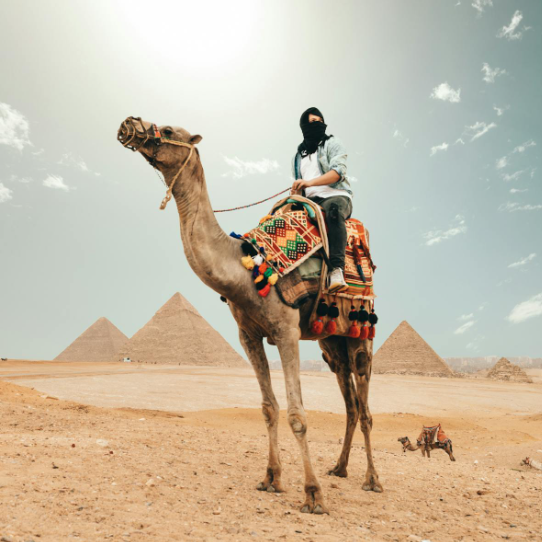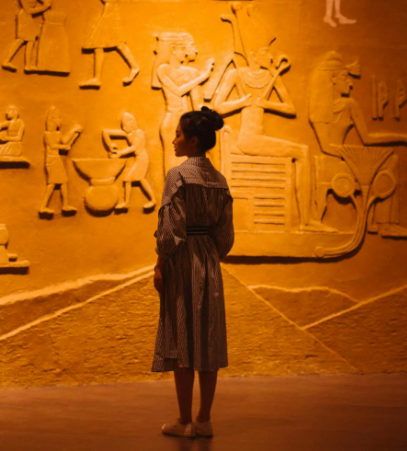Table of Contents
Introduction
Egypt, a country whose roots extend deep into the annals of human history, has long been a beacon of cultural richness and diversity. From its ancient civilization that flourished along the banks of the Nile to its modern-day vibrant culture, Egypt stands as one of the most influential nations in the Arab world. Its cultural legacy, shaped by millennia of history, is a tapestry woven with influences from various religions, artistic movements, and historical events. This article will delve into seven key aspects of Egyptian culture that continue to define the country today, offering a glimpse into the timelessness of its traditions and the enduring impact of its ancient civilization. From the monumental achievements of the Pharaohs to the artistic expressions of the modern era, the culture of Egypt remains a fascinating blend of old and new, deeply intertwined with the country’s social, religious, and artistic identity.

1. The Ancient Egyptian Civilization: The Pillars of Culture
At the heart of Egypt’s culture lies its ancient civilization, one of the oldest and most influential in the history of humankind. For over 3,000 years, Egypt was a center of art, science, philosophy, and religion. Ancient Egyptians made remarkable strides in architecture, mathematics, and medicine, some of which laid the foundation for modern practices.
The most iconic aspect of ancient Egyptian culture is its monumental architecture. The pyramids, especially the Great Pyramid of Giza, remain one of the Seven Wonders of the Ancient World. These structures, built as tombs for pharaohs, symbolize Egypt’s advancements in engineering and mathematics. The Nile River was not only the lifeblood of Egypt but also a spiritual symbol in the Egyptian worldview, representing the cycle of life and death, the eternal flow of time, and the nourishment of society.
Ancient Egyptian art and writing, particularly in the form of hieroglyphs, offered a way to document and preserve the culture. These symbols were not just artistic expressions but were also essential for communicating sacred texts, religious beliefs, and historical records, many of which continue to be deciphered today.
2. Islamic Influence: A Shift to a New Era
In the 7th century, Egypt’s culture was reshaped by the arrival of Islam, which significantly altered the nation’s identity. Following the Arab conquest, Egypt transitioned from being a predominantly Christian and pagan society to becoming a hub of Islamic learning and civilization. The impact of Islam on Egypt is still deeply felt today, influencing the country’s language, religion, art, and daily life.
Cairo became a major center of Islamic scholarship and culture. The Al-Azhar Mosque, founded in 970 CE, is one of the oldest universities in the world and remains a prominent center for Islamic learning. Islamic art, particularly the intricate calligraphy and geometric patterns seen in mosques, palaces, and public spaces, left an indelible mark on the country’s aesthetic traditions. These designs represent the spiritual connection to the divine, avoiding the representation of figures, which aligns with the Islamic prohibition on idolatry.
Arabic also became the dominant language, replacing the ancient Egyptian language and its various dialects. The spread of Islam further united the diverse peoples of Egypt, creating a shared cultural and religious identity that transcended local traditions and had a lasting influence on the nation.
3. Egyptian Music and Dance: Rhythms of a Timeless Tradition
Music and dance have always played a significant role in Egyptian culture, with roots that stretch back to the ancient period. In ancient Egypt, music was closely tied to religious rituals and court entertainment. The sounds of the harp, flute, and drum echoed through temples and palaces, accompanying prayers and festivities. Ancient Egyptian dance, often performed as part of religious ceremonies, also had a rich tradition, with movements symbolizing the cycles of nature, fertility, and life.
In modern Egypt, music has evolved to incorporate both traditional and contemporary styles. Egyptian music is characterized by its use of maqamat (musical scales) and its emphasis on emotional expression. The oud, qanun, and tabla are still widely used in traditional performances, while pop music has gained prominence across the country and beyond.
Egypt is famous for its contributions to Arab music, with legendary artists like Umm Kulthum, Abdel Halim Hafez, and Mohamed Abdel Wahab shaping the musical landscape for generations. More recently, artists like Amr Diab and Tamer Hosny have brought contemporary Egyptian pop music to the global stage, blending traditional sounds with modern influences.
Belly dancing, or raqs sharqi, remains a quintessential part of Egyptian cultural expression. Originally an ancient fertility dance, it is now performed globally, symbolizing Egypt’s rich artistic heritage. The dance’s fluid, sensuous movements and its rhythmic beats evoke the country’s deep connection to the cycles of nature and life.
4. Literary Heritage: From Pharaohs to Modern Writers
Egypt’s literary tradition stretches back to the days of the Pharaohs, with ancient texts such as the Pyramid Texts and the Book of the Dead offering deep insights into Egyptian religion, philosophy, and daily life. These early writings emphasized morality, the afterlife, and the concept of balance, ideas that would resonate through the ages.
During the Islamic period, Arabic literature flourished in Egypt. Cairo became a center of learning, where scholars and poets gathered to share their ideas and write profound works. The literary scene was enriched by poets who created intricate works of Arabic poetry, which explored themes of love, beauty, and spirituality.
In the 20th century, Egyptian literature gained international recognition with the work of Nobel Prize-winning author Naguib Mahfouz. His novels, including The Cairo Trilogy, painted vivid portraits of Egyptian society and politics, addressing themes of personal identity, family dynamics, and social change. Today, Egyptian writers such as Alaa Al Aswany, author of The Yacoubian Building, continue to explore the complex intersection of tradition, modernity, and political unrest in contemporary Egypt.
5. Festivals and Traditions: Celebrating Egyptian Heritage
Egyptian culture is rich in festivals and traditions that have been passed down for generations. One of the most significant religious observances is Ramadan, the Islamic holy month of fasting. During Ramadan, Muslims in Egypt fast from dawn to sunset, engage in prayer, and spend time with family and friends. The end of Ramadan is celebrated with Eid al-Fitr, a joyful holiday marked by feasts, gifts, and festivities.
Another important festival is Sham el-Nessim, an ancient Egyptian celebration of the arrival of spring. This holiday, which dates back to the Pharaonic period, is celebrated by Egyptians of all faiths. It is marked by family gatherings, picnics, and the consumption of traditional foods like feseekh (fermented fish) and painted eggs. The festival highlights Egypt’s enduring connection to its ancient agricultural roots.
In addition, Egypt hosts many modern festivals, including the Cairo International Film Festival, the Cairo Opera Festival, and numerous music and art events, showcasing the country’s ongoing cultural vibrancy.

6. Egyptian Cuisine: A Flavorful Journey Through Time
Egyptian cuisine is a reflection of the country’s diverse history and geography. Traditional Egyptian food is rich in flavors, featuring ingredients such as lentils, fava beans, vegetables, and various spices. Dishes like koshari (a hearty mix of rice, lentils, pasta, and chickpeas), molokhia (a green leafy vegetable stew), and ta’ameya (Egyptian falafel) are staples in Egyptian households.
In addition to traditional meals, Egypt’s long history as a crossroads of cultures has introduced a variety of flavors, from Mediterranean influences to the spices and ingredients brought by traders from Africa, Asia, and Europe. Street food is also an essential part of Egyptian culture, with vendors selling everything from shawarma to sugary pastries like basbousa.
7. Modern Egypt: A Country in Transition
While Egypt’s ancient and Islamic influences remain at the core of its culture, modern Egypt has emerged as a dynamic and diverse society. The country’s political history, including its struggles for independence and the impacts of the Arab Spring, has shaped its modern identity. The role of women, youth, and the ongoing dialogue between tradition and modernity are key topics in Egyptian society today.
Cairo, as the capital city, is a bustling metropolis that blends modern infrastructure with historical sites. The rise of digital media, arts, and new educational movements signals a shift toward a more globalized Egypt, where youth culture and creativity are reshaping the national identity.
Conclusion
Egypt’s culture is a fascinating blend of ancient legacies and modern influences, with each aspect contributing to the nation’s vibrant identity. From the timeless achievements of the Pharaohs to the rich Islamic heritage, from the expressive rhythms of Egyptian music to the intellectual legacy of its literature, Egypt continues to captivate the world with its diverse and enduring culture. As the country navigates the complexities of the modern world, its cultural traditions remain a source of pride, resilience, and inspiration for Egyptians and people across the globe.